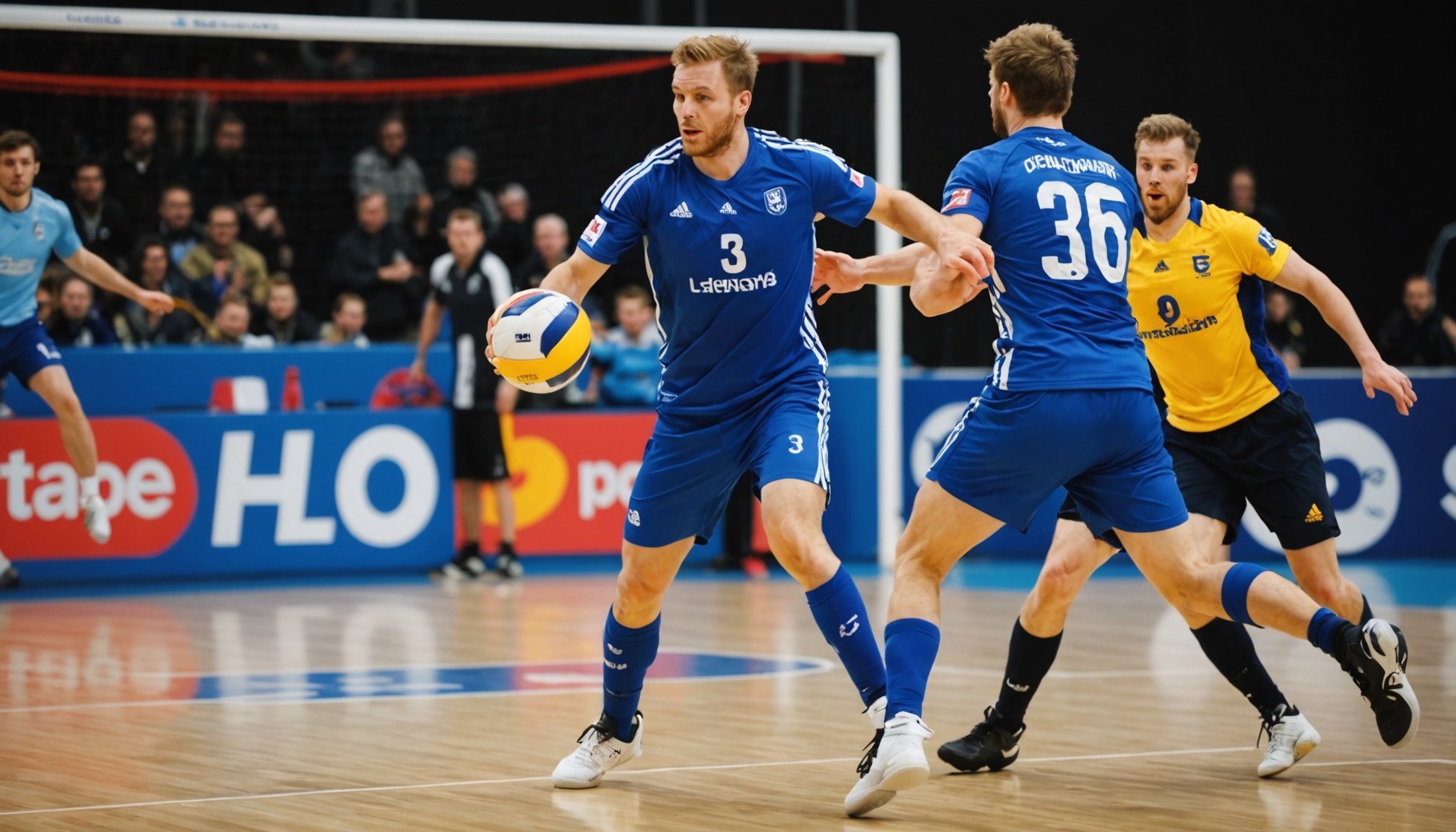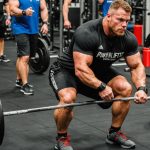Unlocking Peak Performance: Cutting-Edge Goal-Scoring Strategies for UK Handball Teams
Understanding the Game: Foundations of Handball Strategy
Handball, a fast-paced and physically demanding sport, requires a blend of skill, strategy, and physical conditioning to achieve peak performance. For UK handball teams aiming to elevate their game, it’s crucial to start with a solid understanding of the game’s fundamentals.
Tactical Awareness
Tactical awareness is key in handball. Coaches and players must be adept at reading the game, anticipating opponents’ moves, and executing precise strategies. This involves a deep understanding of formations, player positioning, and the timing of attacks and defenses.
In parallel : Mastering balance and poise: key techniques for uk figure skaters to thrive in high-pressure moments
For instance, a high press strategy, similar to those used in soccer, can be highly effective in handball. This involves the team pressing high up the court to win the ball back quickly and create scoring opportunities. Here’s what a high press might look like in practice:
- Initial Pressure: The front line of the team applies immediate pressure on the opponent as soon as they gain possession.
- Supporting Players: Midfielders and defenders provide support by closing down spaces and cutting off passing options.
- Quick Transitions: Once the ball is won back, the team quickly transitions into an attacking phase, exploiting the opponent’s disorganization.
Data-Driven Approaches: Leveraging Performance Analysis
In the modern era of sports, data plays a pivotal role in enhancing team performance. Handball teams can benefit significantly from performance analysis, which involves tracking various metrics during matches and training sessions.
Also to discover : Maximizing performance: how biometric assessments enhance training outcomes for boxers in the uk
Performance Metrics
Key performance metrics in handball include:
- Shooting Accuracy: Tracking the percentage of successful shots on goal.
- Pass Completion Rate: Monitoring the success rate of passes to understand team cohesion and communication.
- Possession Time: Analyzing how long the team maintains possession to gauge control over the game.
- Defensive Efficiency: Evaluating the number of successful defensive actions, such as blocks and interceptions.
Here is an example of how these metrics can be presented in a comparative table:
| Metric | Team A | Team B |
|---|---|---|
| Shooting Accuracy | 60% | 55% |
| Pass Completion Rate | 80% | 75% |
| Possession Time | 55% | 50% |
| Defensive Efficiency | 70% | 65% |
Insights from Data
Coaches can use these metrics to identify areas for improvement and tailor their training programs accordingly. For example, if a team’s shooting accuracy is low, they might focus on shooting drills and conditioning exercises to improve strength and technique.
“As coaches, we rely heavily on performance data to make informed decisions. It helps us pinpoint specific areas where our athletes need more work, whether it’s in their physical conditioning or tactical execution,” says Jane Smith, a seasoned handball coach.
Physical Conditioning: The Backbone of Peak Performance
Physical conditioning is essential for handball athletes, given the high intensity and physical demands of the game. A well-structured strength and conditioning program can significantly enhance team performance.
Strength Training
Strength training is critical for handball players to develop the power and endurance needed for the game. Here are some key areas to focus on:
- Upper Body Strength: Essential for throwing, catching, and blocking.
- Exercises: Pull-ups, dumbbell rows, shoulder presses.
- Lower Body Strength: Crucial for jumping, sprinting, and changing direction quickly.
- Exercises: Squats, lunges, deadlifts.
- Core Strength: Vital for stability and overall athletic performance.
- Exercises: Planks, Russian twists, leg raises.
Conditioning Coach Insights
A conditioning coach can design a program that integrates these strength training elements with high-intensity interval training (HIIT) to mimic the game’s demands.
“HIIT is a game-changer for handball athletes. It helps them build the endurance and explosive power they need to perform at their best during matches,” explains Mark Johnson, a strength and conditioning coach.
Training Programs: Tailoring to Team Needs
Effective training programs are tailored to the specific needs and goals of the team. Here are some strategies to consider:
Small-Sided Games
Small-sided games, such as 3v3 or 4v4, can be highly beneficial for handball teams. These games focus on decision-making, communication, and quick transitions, all of which are critical in a full match.
Position-Specific Training
Position-specific training ensures that each player is well-prepared for their role on the court. For example, goalkeepers might focus on reflex training and shot-blocking techniques, while backcourt players might work on long-range shooting and passing accuracy.
High Intensity Training
High intensity training sessions simulate the intense nature of handball matches. These sessions can include sprint drills, agility training, and strength exercises performed at high intensity.
Here’s an example of a weekly training program:
- Monday: Strength Training (Upper Body)
- Pull-ups: 3 sets of 8 reps
- Dumbbell rows: 3 sets of 10 reps
- Shoulder presses: 3 sets of 12 reps
- Tuesday: Small-Sided Games
- 3v3 game focusing on quick transitions and decision-making
- Wednesday: Rest Day
- Thursday: Conditioning (HIIT)
- Sprints: 5 sets of 20 meters
- Agility drills: 3 sets of 10 reps
- Friday: Position-Specific Training
- Goalkeepers: Reflex training and shot-blocking
- Backcourt players: Long-range shooting and passing drills
- Saturday: Full Team Training
- Tactical drills focusing on high press and quick transitions
- Sunday: Rest Day or Light Recovery Session
Injury Prevention: A Critical Aspect of Peak Performance
Injury prevention is a vital component of any sports training program. Handball, with its high-speed collisions and intense physical demands, is no exception.
Conditioning for Injury Prevention
A well-designed strength and conditioning program can help prevent injuries by strengthening key areas such as the shoulders, knees, and ankles.
Warm-Up and Cool-Down Routines
Proper warm-up and cool-down routines are essential for preventing injuries. These routines should include dynamic stretching, light cardio, and muscle activation exercises.
Here’s an example of a warm-up routine:
- Dynamic Stretching: Leg swings, arm circles, hip rotations
- Light Cardio: Jogging laps around the court
- Muscle Activation: Glute bridges, planks
“Injury prevention is not just about avoiding injuries; it’s also about maintaining peak performance over the long term. A strong, injury-free team is a more effective team,” notes Dr. Emily Taylor, a sports physiotherapist.
Social Media and Community Engagement: Building Team Spirit
Social media and community engagement can play a significant role in building team spirit and maintaining morale.
Sharing Success Stories
Teams can share success stories, match highlights, and behind-the-scenes glimpses into their training sessions on social media platforms. This helps to build a sense of community and keeps fans engaged.
Interactive Sessions
Coaches can use social media to engage with players and fans through interactive sessions, such as Q&A sessions, live training broadcasts, and motivational posts.
Here’s an example of how a team might use social media:
- Match Highlights: Share clips of key moments from recent matches.
- Training Insights: Post videos of training sessions to give fans a glimpse into the team’s preparation.
- Player Profiles: Feature individual players, highlighting their strengths and achievements.: The Path to Peak Performance
Achieving peak performance in handball is a multifaceted endeavor that involves tactical strategy, data-driven analysis, physical conditioning, tailored training programs, injury prevention, and social media engagement.
By integrating these elements, UK handball teams can elevate their game, enhance their performance, and strive for excellence in every match.
Final Tips for Coaches and Athletes
- Stay Data-Driven: Continuously track and analyze performance metrics to make informed decisions.
- Focus on Strength Conditioning: Develop a robust strength and conditioning program to enhance physical performance.
- Engage with Your Community: Use social media to build team spirit and engage with fans.
- Prioritize Injury Prevention: Ensure that injury prevention is a core part of your training program.
In the words of legendary coach, Bobby White, “Peak performance is not just about winning; it’s about the journey, the hard work, and the dedication. With the right strategies and a commitment to excellence, any team can achieve greatness.”











